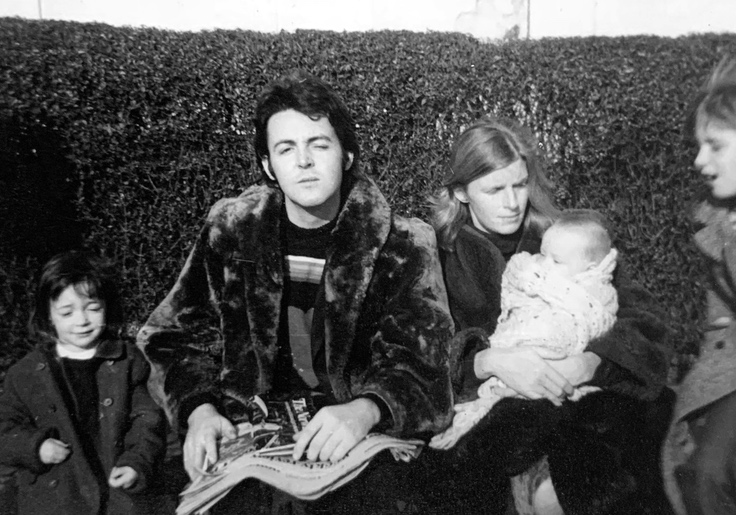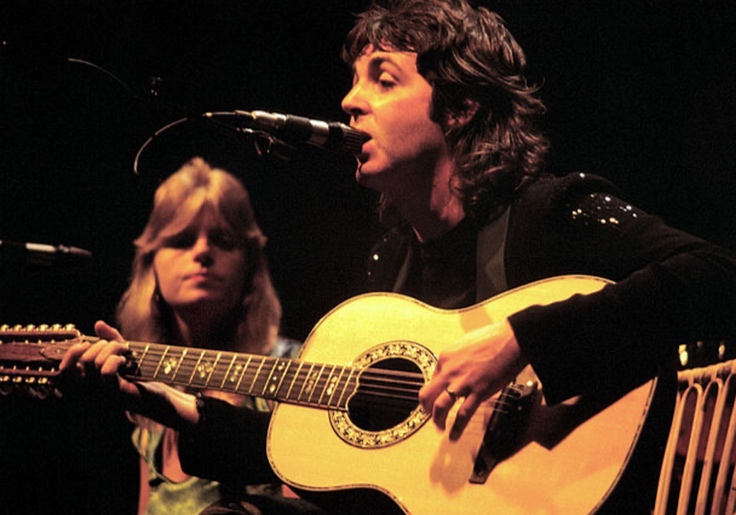Anyone who’s ever abruptly found themselves out of a job knows how devastating it is for the soul. Yes, there are more immediate and baser concerns—How will I pay my mortgage? What will I tell my family and friends? How many pens should I pinch on my way out of the office?—but for the first few days, weeks, or even months afterward, the loss feels deeply personal. For as much as we might tell ourselves our identity is separate from our 9-to-5, the truth is what we do makes up a part of who we are. When you are suddenly no longer doing it, you are faced with a more existential question: Who am I?
This was the question plaguing Paul McCartney by late 1969 as it was becoming clear to him (if not yet to the public) the Beatles were finished. Outwardly, the band was humming along quite nicely. In September 1969, they released one of their finest records, Abbey Road, that suggested where the lads could have led pop music into the 1970s. In October, the Beatles issued yet another number-one single ("Something," the George Harrison masterpiece, backed by "Come Together"). John Lennon even hinted in a November interview the group had enough material to keep putting out more albums.
In truth, however, there were no potential resolutions to the ongoing business and creative disputes that could keep the Beatles together. Alongside the increasingly shaky financial ground of Apple, the Beatles’ idealistic corporation, there was growing acrimony between Paul and the other lads over the decision to have Allen Klein manage the band over Paul’s father-in-law, John Eastman.
By this point, only McCartney was truly interested in continuing to work as the Beatles, a project he had largely kept going himself in the years since the group stopped touring in 1966. Lennon’s Plastic Ono Band, artistic pursuits, and activism had long taken priority for him, while Harrison saw the dissolution of the Beatles as an opportunity to finally bloom as a solo artist out of the shadow of the Lennon-McCartney behemoth. Even Ringo Starr was pursuing an acting career.
Most importantly, John had privately told his bandmates he wanted a "divorce" even before Abbey Road had been released. So when, in October 1969, McCartney and his young family—new wife Linda, adopted daughter Heather, and newborn Mary—decamped to his farm in the Scottish Highlands, he knew he was effectively unemployed for the first time in his adult life.
This is where The McCartney Legacy: Volume 1: 1969-73 picks up in earnest, with authors Allan Kozinn and Adrian Sinclair using their own interviews, contemporaneous news reports, the virtual library of Beatles histories, and recording-session schedules to piece together a narrative about how a purposeless Paul found his way back to musical relevance and pop superstardom.
Who was Paul McCartney apart from the Beatles? One of the most celebrated songwriters of the last century, yes, but this was not evident to him as he contemplated his future in austere conditions in Scotland. There, the demands of domestic life—both as a father and as a wannabe farmer—served as a distraction from the ongoing, behind-the-scenes legal drama of the Beatles breakup. But McCartney's isolation also enabled his forays into self-pity, drunkenness, depression, and even anger. It took his patient American wife, Linda, to help him recognize that his "depression was about work, and … that work was also the cure."
"What he needed was to pick up a guitar and get on with it," the authors write, characterizing Linda’s blunt but loving message to her moping soon-to-be-ex-Beatle.

Through their meticulous recounting of every recording session McCartney undertook between 1969 and 1973, Kozinn and Sinclair demonstrate how both of these elements—"getting on with it" and Linda herself—became the foundation of all of McCartney’s work in this early post-Beatles period. Starting with the at-home recordings that made up most of his critically panned 1970 debut McCartney all the way to Wings’ 1973 magnum opus Band On the Run, the throughline was McCartney’s incredible work ethic for a musician who might have coasted on his past fame. And Linda, an occasional photographer of rock bands with no prior experience as a musician, steadfastly served as muse, partner, and moral support for Paul.
The results were not always coherent, interesting, or even very good. The aforementioned McCartney has had an appropriate reevaluation as a landmark in "lo-fi" music—35 years later, the Black Keys were practically ripping off songs like "Oo You" and "Momma Miss America"—but some of the album’s musical experiments were barely half-baked ("Glasses" and "Kreen-Akrore" come to mind) when they were put to acetate. Linda’s true songwriting contributions are essentially unknowable, but her vocal contributions on the recordings are a poor substitute when you’ve heard the sublime three-part Beatle harmonies of Paul, John, and George. McCartney’s misbegotten forays into children’s music culminated in the too-cute-to-be-ironic single, "Mary Had a Little Lamb." And the less said about Wild Life, the debut album from Wings, the better.
But amid the duds, Paul was churning out classics such as "Maybe I’m Amazed," "Another Day," "The Back Seat of My Car," "Live and Let Die," "Helen Wheels," and "Jet." Yes, Harrison’s debut, 1970’s All Things Must Pass, got the rave critical acclaim it deserved, but the album was the product of a liberated underdog, eager to show he was more than just a junior Beatle. McCartney, on the other hand, was wounded and isolated from his onetime bandmates and brothers—yet he could still prove the McCartney magic hadn’t dissipated.
And some of his deeper cuts earn more appreciation when readers understand the creative work McCartney, with Linda by his side, put into his intense and productive studio sessions. In New York, where Paul and Linda recorded most of their 1971 album Ram, there is some compelling drama during the push to marry two different song fragments, titled "Long Haired Lady" and "Love Is Long" on the demo cassette Paul brought from London, into one track. Two different tempos! Joined by employing irregular time signatures! It’s thrilling to read about a master in his element, shaking off the outside world and just getting on with the work.
By the time Wings released Band On the Run in December 1973, McCartney’s public search for his own identity seemed complete. Both the title track and the closing song, "Nineteen Hundred Eighty Five," are confident statements of McCartney’s distinct style that rival the Beatles’ similarly big, sweeping studio productions.
Early on, Kozinn and Sinclair necessarily tie the story of McCartney’s music-making to the dreary Beatles break-up business. It not only informed the lyrics of several of McCartney’s songs—his "Too Many People" is a kiss-off to Lennon for taking his "lucky break" and "[breaking] it into two"—but shaped McCartney’s self-discovery.
But as the Beatles faded into the background, the concurrent ups and downs in Paul and Linda’s personal lives and in the creation and drama within Wings make for less compelling tension. McCartney and Lennon sniping at each other in the press and writing songs about each other in response is the sort of juicy stuff Beatles fans eat up. Wings guitarist Henry McCullough lashing out at Linda doesn’t quite carry the same excitement.
Nevertheless, these details still tell us a lot about the central question of who Paul McCartney is and how to judge his post-Beatles legacy. As he had been in the waning days of the Beatles, Paul had become domineering and hyperfocused on his vision. That attitude chased away McCullough and Denny Seiwell, the Wings drummer who had worked with McCartney since the Ram recording sessions in New York. The authors reach a conclusion at the end of the book, given the way the surviving non-McCartney member of Wings, Denny Laine, viewed himself as simply a utility player on Band On the Run.
"Paul had come full circle," they write. "At the turn of 1974, like the turn of 1970, he was essentially without a band."
And he was who he had always been: a brilliant musical mind with a restless need to create and work.
The McCartney Legacy: Volume 1: 1969-73
by Allan Kozinn and Adrian Sinclair
Dey Street Books, 720 pp., $35
Michael Warren is a senior editor at the Dispatch.
